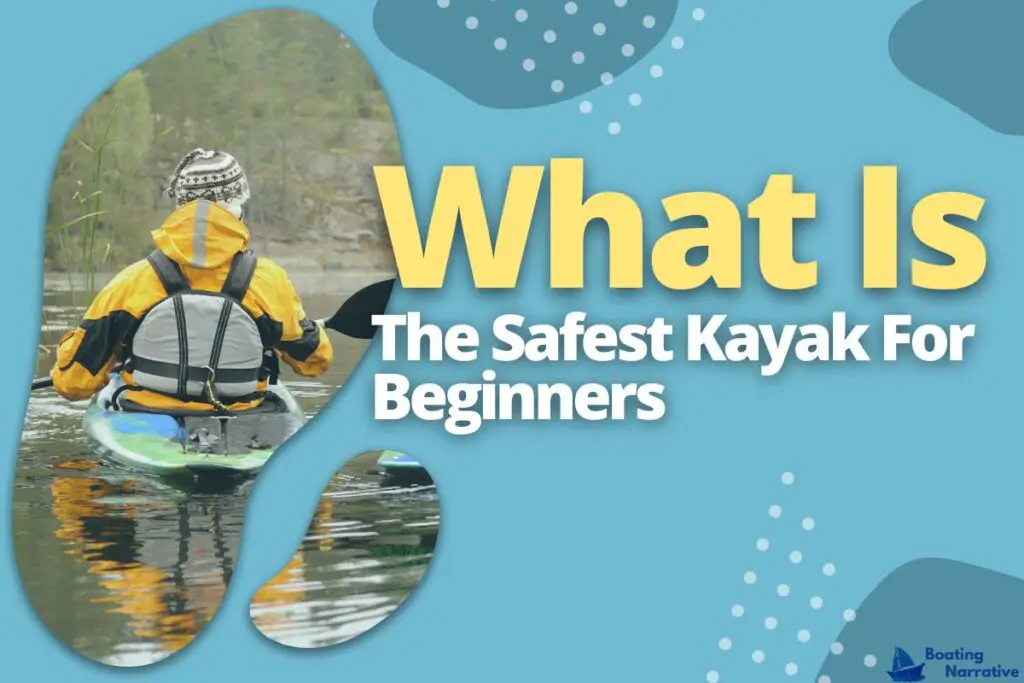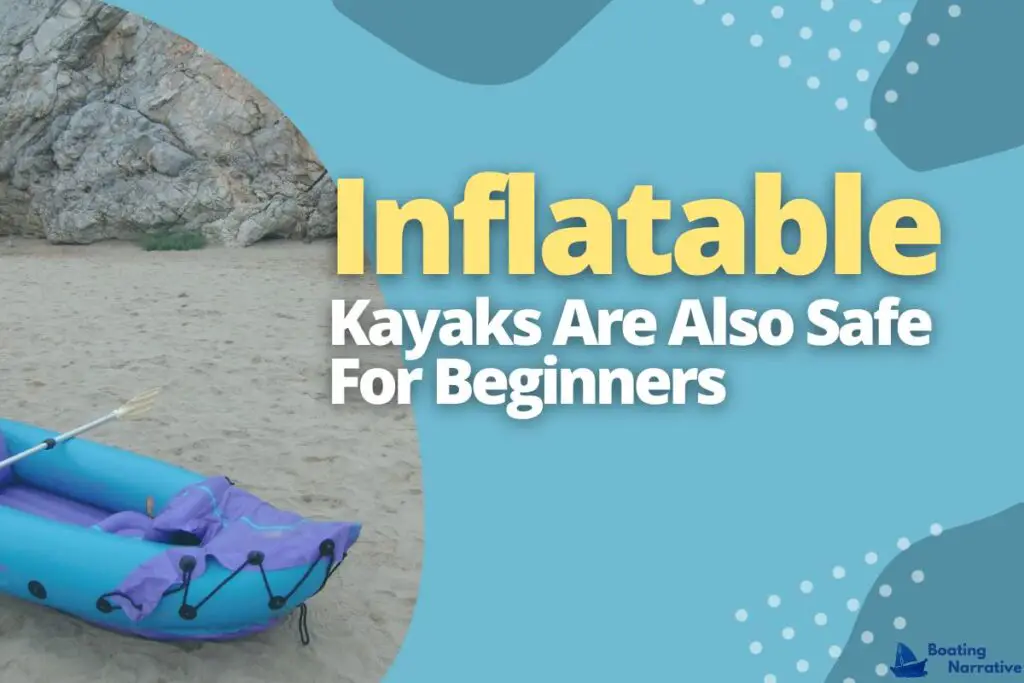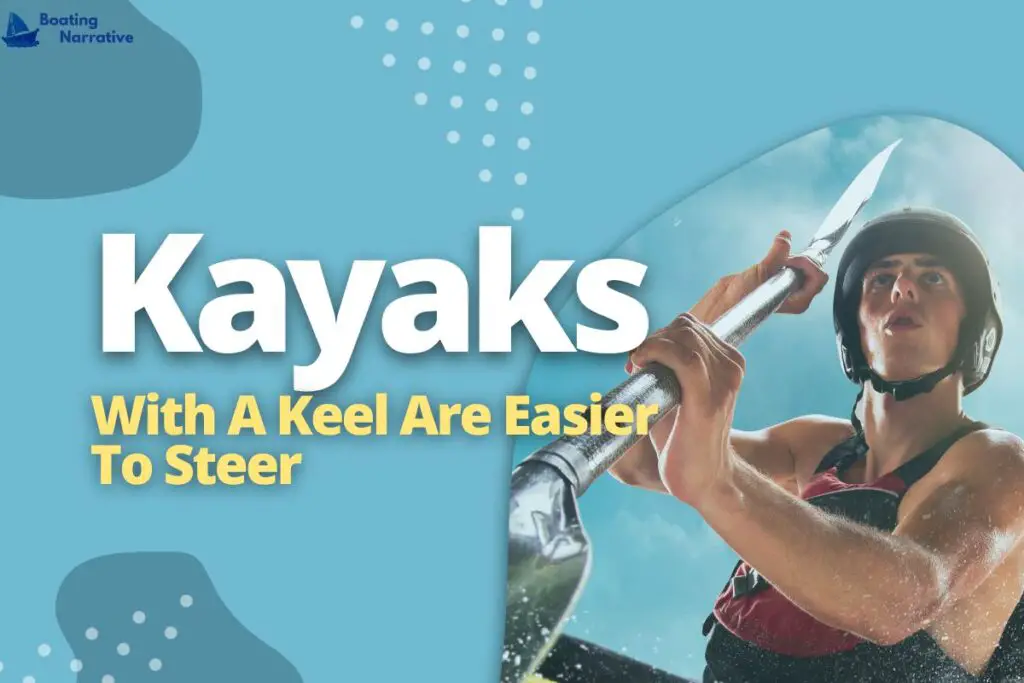When choosing a kayak, there are many factors to consider. But if you’re a beginner, the most important factor is safety. So what is the safest kayak for beginners?
So how do you choose the safest kayak for beginners? There are a few things to keep in mind, such as buoyancy, stability, and storage space.
Keeping these things in mind, I will explain more in this blog post to find the safest kayak for beginners. And once you find the right one, get out there and enjoy the great outdoors.
Key Takeaways
- Kayaks are generally safe for beginners, as long as they are used with caution and common sense.
- Some kayaks are designed specifically for beginners, with features like stabilizing bars and extra floatation.
- It is always a good idea to take a kayaking class or go on a guided tour before going out on your own.
- Pay attention to weather conditions and be aware of your surroundings when kayaking.
- Wear a life jacket and follow all safety precautions when getting in and out of the kayak.

Here’s The Answer To What Is The Safest Kayak For Beginners
When it comes to choosing the safest kayak for beginners, there are a few things you should keep in mind. You’ll want to consider the width of the kayak. A wider kayak is more stable and durable, making it a great option for beginners.
You’ll also want to look for a kayak with a hatch and rod holders. This will give you enough room to store your gear and keep your hands free while paddling.
A recreational kayak is another great option for beginners. These kayaks are lightweight and easy to maneuver, making them perfect for exploring calm waters.
Some recreational kayaks even have tandem options so that you can share the fun with a friend or family member. Just be sure to check the weight capacity before you buy—you’ll want a kayak that can accommodate your weight and gear.
If you’re planning on paddling in rougher waters, you may want to consider a sit-inside kayak. These kayaks are more durable and provide better protection from the elements.
They also offer more storage options, so you can bring everything you need for a long day on the water. Be sure to choose one with scupper holes and a spray skirt to keep yourself dry in rough conditions.
Sit-On-Top Kayaks Are The Safest Type Of Kayak For Beginners

Sit-on-top kayaks are the best choice for beginners because they are stable, easy to get in and out of, easy to maneuver, and can be used by people of all ages.
Their large cockpit allows you to easily enter and exit while providing a secure seat when paddling.
This kayak style is perfect for young children who may not yet have mastered balance due to its stability and ease of control.
They Are Stable, And Easy To Get In And Out Of
Beginners should start with sit-on-top kayaks because they are the simplest to enter and exit.
Their stability also helps you feel comfortable and confident while learning how to control them.
Inflatable Kayaks Are Also Safe For Beginners

It’s important to note that inflatable kayaks are more difficult to control, maneuver, and get in and out of than hardshell kayaks.
They’re also trickier to load and unload onto the water from the shore. If your goal is simply to explore a quiet lake or river, then an inflatable model may be perfect for you.
But if you want to learn how to paddle in open waters (or just want something sturdy), getting yourself a boat with a solid hull will be better for your safety and enjoyment.
Hard-Shell Kayaks Are Faster And Easier To Maneuver
One of the great things about hardshell kayaks is that they are faster and easier to maneuver than sit-on-top kayaks, which makes them a favorite among experienced paddlers.
However, getting in and out of a hard shell requires more effort since you must climb over the boat’s side or use a sliding seat to gain access.
Also, since these boats don’t have skirts around their cockpit or bulkheads (the walls that keep water from entering your kayak), they are less stable than sit-on-top kayaks.
It can be harder for beginners to roll over a hard shell because there isn’t much space inside the cockpit than most sit-on-tops with many open areas.
Kayaks With A Keel Are Easier To Steer

If you’re new to kayaking, a keel is something that might sound like a foreign concept. But it’s pretty simple: the keel is a fin on your boat’s bottom that helps with stability and keeps your kayak from tipping over.
This is why it’s important for beginners to get an entry-level kayak with one if they can. Keels are especially advantageous for those who plan on doing some fishing while out on their boat.
When you fish from a river or lake, you have to wait until there are no waves before casting off into open water—the waves could tip over your vessel if they get too large.
While this isn’t necessarily bad (you’ll get wet anyways), it’s not ideal when trying to reel in some big game fish. A keel will help keep everything balanced so that nothing falls into disarray before or during casting sessions.
Choose A Kayak That Is The Right Size For Your Body Type And Skill Level
If you are a beginner, choose a small and easy-to-handle kayak. A sit-in or inflatable kayak might be a nice place to start.
If you’re more experienced, you might want to think about alternative boats like sea kayaks or touring kayaks, which have more space for storage and comfort but are still easy to use as they have hulls that help them glide through water easily without sinking too deeply into it.
Which Type Of Kayak Is Safe For Beginners?

The safest type of kayak for beginners is the sit-on-top kayak. Sit-on-top kayaks are incredibly stable on the water, easy to handle, and easy to get into and out of. Additionally, they are less expensive than inflatable kayaks and other varieties of kayaks.
Sit-on-top kayaks come in two styles: SOTs open at the front (like this) or SOTs with a fabric skirt around them (like this).
Either kind will work fine, but if you’re mostly paddling on flat lakes or slow rivers, an open cockpit might give you better visibility when it comes time to see where you’re going.
If speed is more important than comfort for your needs, I would recommend getting into a hardshell or inflatable model instead since these can be faster than other options when compared against other types.
How To Choose The Safe Size Kayak For Beginners?
- Pick a kayak appropriate for your body type and level of experience.
- Select a kayak appropriate for the terrain you’ll be paddling on.
- The size of your kayak should correspond to the distance you plan to paddle.
How To Choose The Safe Type Of Kayak For Beginners?
When choosing a kayak for beginners, the first thing to consider is stability and maneuverability.
Beginners should pick a solid enough boat to withstand rough seas and strong winds without tipping but not too big or heavy to be cumbersome to move around on land.
The boat should also be easy to control in the water since most people will first learn how to kayak from an instructor or guide.
It’s important that beginner kayakers have access to good instruction materials before they take their boats out into open waters—it’s vital they learn how to operate their vessels safely before venturing far offshore.
What Are The Dangers Of The Beginner Kayaker Encounters?
It is important that you know all of the dangers that a beginner kayaker might encounter. If you know what to expect, you will be better prepared and able to avoid them.
In addition, knowing how to get out of any situation helps ensure safety and comfort. The first step in avoiding these dangers is recognizing them when they happen.
- Drowning is one of the most common reasons why people die while kayaking or canoeing; it happens in less than 2% of all boating accidents and causes about 70 fatalities per year on average in the United States alone! It can also happen when you go into water deeper than your body’s length or if there are sudden waves (such as those caused by passing motorboats). To avoid drowning, stay away from steep drop-offs, keep your feet firmly planted on dry land at all times (even if it means squatting), and sit upright rather than lying down while paddling through rapids.
- Wear life jackets at all times, whether swimming or not, so that if anything goes wrong, someone else will be able to rescue them rather than vice versa (and since most drownings occur when trying to save others), this could potentially save many lives each year.
Conclusion
When choosing a kayak, there are many different factors to consider. But if you’re a beginner, the most important factor is safety.
So, what is the safest kayak for beginners? The answer may surprise you. It’s not necessarily the biggest or the most expensive kayak. The safest kayak for beginners is often the simplest and most basic model.
Why? Because a simple kayak is easier to handle and more stable than a complex one. And stability is key when you’re first learning how to paddle.
I hope this post has helped you to choose the safest kayak for beginners. If you’re looking for more information about the different types of kayaks, check out some of our other posts on this topic.

